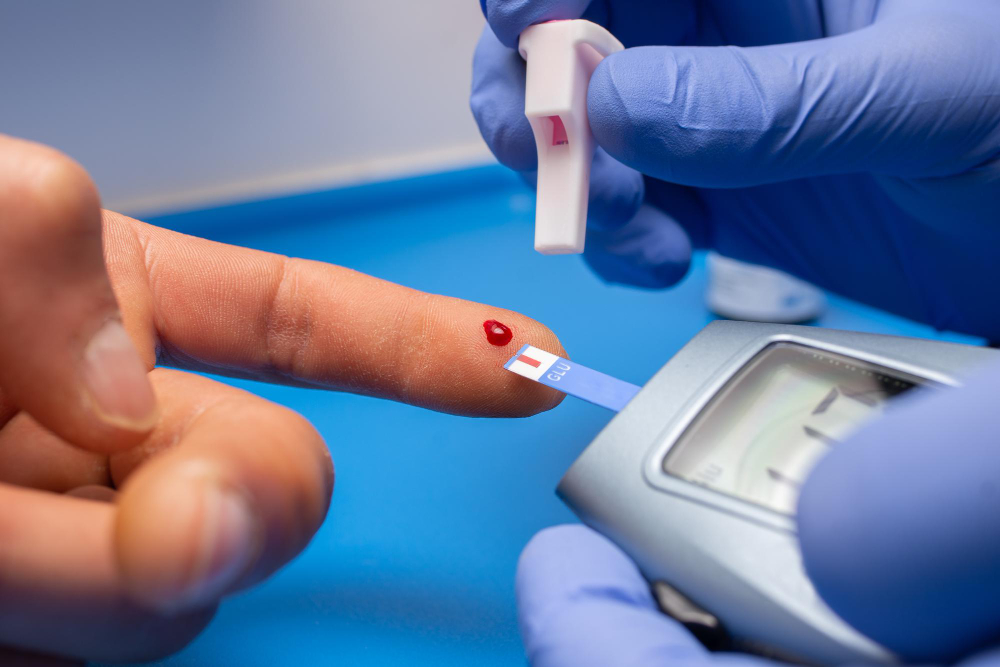
Introduction
Hyperglycemia is high blood sugar, where there is insufficient production or utilsation of insulin therefore presenting as excess of glucose in the bloodstream. Hyperglycemia can be caused by reduced insulin secretion, a decrease in the utilization of glucose in the body, or increased glucose production (American Diabetes Association, 2022). Hyperglycemia may cause complications that may lead to injuries such as falls and scalding. This makes it essential to develop possible interventions to reduce the risks (Childers & Levesque, 2013). A nursing diagnosis is a part of the nursing process that helps nurses plan the care for their patients. A hyperglycemia diagnosis places the patient at risk of injury due to the associated complications. Therefore, this paper outlines SMART goals related to the nursing diagnosis, aligned interventions, and the rationale behind each intervention.
Goals
The nursing plan’s major objective is to lower the patient’s blood glucose levels. The first goal entails making dietary changes, such as eating a diet low in carbohydrates, fiber, and protein. The second objective highlights the value of adding more physical exercise to the patient’s daily routine, which can aid in controlling blood sugar levels. The patient will receive their medicine on time and in the right dose thanks to the third goal, which strives to increase medication compliance. Together, these objectives will contribute to bettering glucose levels and lowering the possibility of difficulties from hyperglycemia.
Interventions and rationale
To achieve the first goal, the nurse can devise a meal plan. The patient is informed on the importance of a healthy diet that is low in carbohydrates and high in proteins and fiber, along with the portion sizes of these foods according to the patient’s health, level of activity, blood sugar levels, and weight (Doenges et al., 2019). Dietary modifications for the patient will help in stabilizing blood sugar levels. (Mouri & Badireddy, 2019). In addition to this, the patient is also informed on which dietary habits to change. A healthy meal plan would work to manage the patient’s glucose levels as well as reduce other complications (RNAO, n.d). This information would help plan a personalized meal plan for the patient, thus reducing glucose level fluctuations (American Diabetes Association, 2022).
One of the ways to manage hyperglycemia is medical management where the patient is put on medication depending on the severity of the condition. As Huether et al. ()2022 posited, it is important to ensure that the patient is on the right regiment to manage their glucose levels. According to Mouri & Badireddy, 2019 unmanaged hyperglycemia can result in several life-threatening complications such as damage to the eyes, kidneys, nerves, heart, and peripheral vascular system. Thus, it is important to manage hyperglycemia effectively and efficiently to prevent complications of the disease and improve patient overall health. Additionally, the patient needs to be informed on how the medication is administered and stored (Chua & Dave, 2023).
Adherence to the prescribed medication helps maintain glucose levels and prevent further progression of the condition (Gulanik & Myers, 2016). Regular exercise is also a plausible intervention to manage hyperglycemia. The nurse can work with the patient to create a fitness program suitable for their age, degree of fitness, and medical concerns. The patient can learn more from the nurse about the advantages of regular exercise for controlling blood sugar levels and overall health (Cleveland Clinic, 2020). In justification, regular exercise can enhance insulin sensitivity, lower blood sugar levels, and lower the danger of problems brought on by hyperglycemia.
In conclusion, hyperglycemia is a condition that may result in complications and injuries if not carefully managed. SMART goals and interventions such as healthy meal plans, medical management, and regular physical activity can help alleviate complications and enhance the patient’s overall health. Moreover, Heitkemper et al. (2010) asserted that nurses can help manage the condition by educating the patients on proper diets, lifestyle changes, and medication.
References
- American Diabetes Association. Standards of medical care in diabetes. Diabetes Care. 2020;43(Supplement 1), S1-S211. https://doi.org/10.2337/dc20-SPPC
- Childers, B., & Levesque, C. M. (2013). Use of insulin in the noncritically ill-hospitalized patients with hyperglycemia and diabetes. Elsevier Nursing Care Plan Guides-Critical Care Nursing Clinics, 25(1), 55-70.
- Chua, C., & Dave. (2023, February 28). Seventeen diabetes mellitus nursing care plans and nursing diagnoses. Nurses’ labs. https://nurseslabs.com/diabetes-mellitus-nursing-care-plans/
- Doenges, M. E., Moorhouse, M. F., & Murr, A. C. (2019). Nursing care plans: Guidelines for individualizing client care across the life span. FA Davis.
- Gulanick, M., & Myers, J. L. (2016). Nursing Care Plans: Nursing Diagnosis and Intervention. Elsevier Health Sciences
- Heitkemper, M. Barry, M., Dirksen, S. R., Bucher, L., & O’Brien, P. G. (2010). Medical-surgical Nursing in Canada: Assessment and Management of Clinical Problems. Mosby Elsevier.
- Huether, S. E., Craft, J., Gordon, C., McCance, K. L., & Brashers, V. L. (2022). Understanding Pathophysiology Australia and New Zealand Edition. Elsevier Health Sciences.
- Mouri, Mi., & Badireddy, M. (2019). Hyperglycemia. National Library of Medicine; Stat Pearls Publishing. https://www.ncbi.nlm.nih.gov/books/NBK430900/
- RNAO. Diabetes Canada. (n.d.). Full guidelines. https://guidelines.diabetes.ca/cpg
- Sparks, R. S., & Taylor, C. M. (2011). Nursing Diagnosis Pocket Guide. F.A. Davis Company.
